Today, we are comparing two 5.2-channel AV receivers aimed at delivering quality home theater experiences: the Denon AVR-S670H, a 2023 model with the latest features, and the Marantz NR1510, a best-seller from late 2019. This comparison will examine their specifications, performance, and features to help determine how the newer model stacks up against the tried-and-tested favorite.
In This Comparison:
Denon AVR-S670H vs. Marantz NR1510: Specifications
| DENON AVR-S670H | Marantz NR1510 | |
|---|---|---|
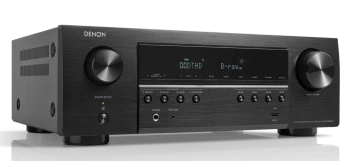 |  |
|
| Model Year | 2023 | 2019 |
| Number of Channels | 5.2 | 5.2 |
| Stereo RMS Power (watts) | 75W (8 Ω, 20 Hz - 20 kHz, 2 channel driven) | 50W (8 Ω, 20 Hz - 20 kHz, 2 channel driven) |
| Hdmi Inputs/Outputs | 6/1 | 6/1 |
| Video Upscaling | To 4K and 8K | 4K |
| Weight | 17.2 lbs | 18.1 lbs |
| Today's Best Price | Find on Amazon ProjectorScreen.com | Find on Amazon |
Before diving into the performance comparison, let’s take a moment to review the specifications of both receivers outlined above. The Denon AVR-S670H stands out with its higher power output, offering up to 75W per channel at 8 ohms compared to the Marantz NR1510’s 50W. On the video side, the Denon supports advanced 8K resolution, while the Marantz is limited to 4K, reflecting the technological advancements made since 2019. With these differences in mind, we’ll now explore how each receiver performs in real-world testing.
Design and Build
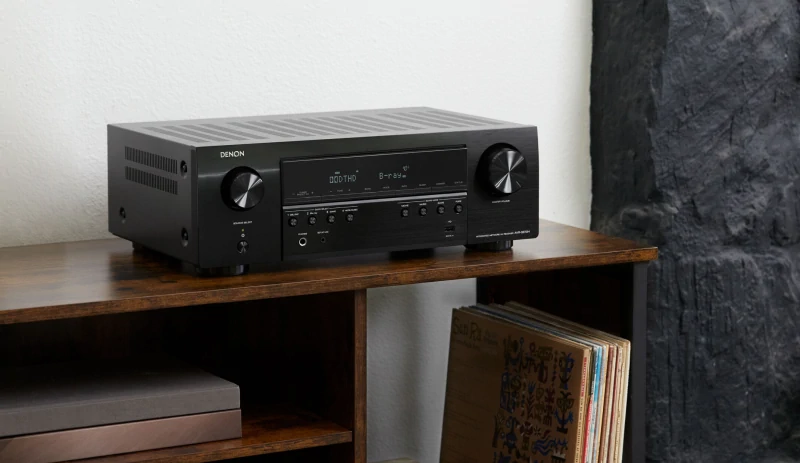
Both the Denon AVR-S670H and Marantz NR1510 showcase a similar premium build quality with a sleek black finish, ensuring they blend seamlessly into most home theater setups. While their overall design is comparable, the Marantz NR1510 stands out with its notably slimmer profile, making it an excellent choice for tighter spaces or low-profile installations. Despite its compact size, the NR1510 is slightly heavier at 18.1 lbs compared to the 17.2 lbs of the Denon, reflecting its robust construction. Both receivers exude durability and elegance, catering to users who value both aesthetics and functionality.
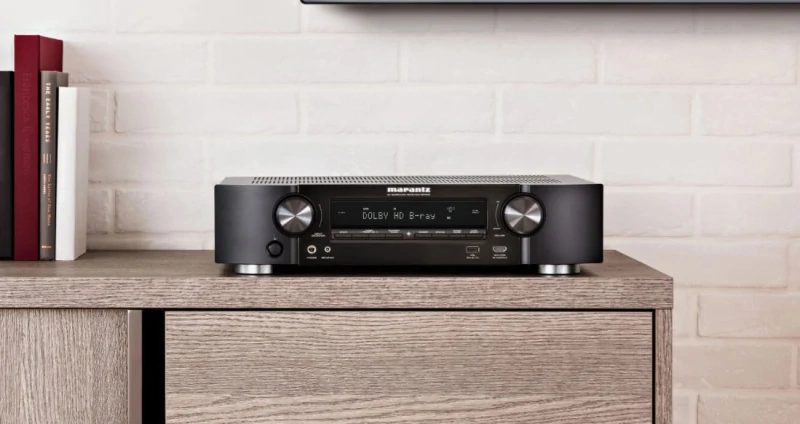
Winner: a tie
Connectivity and Setup
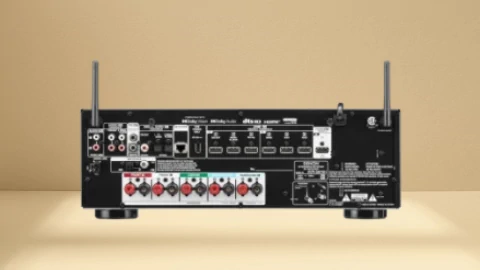
In our testing, both receivers proved to be versatile when it comes to connectivity options. The Denon AVR-S670H offers six HDMI inputs, with three supporting 8K/60Hz and the rest capable of 4K/120Hz. This gives it a clear edge for those seeking compatibility with the latest 8K displays or gaming systems. On the other hand, the Marantz NR1510 provides six HDMI inputs as well but is limited to 4K/60Hz, which is still sufficient for most home theater setups.
Get the Best Deal on Amazon Today!
Setting up both devices was straightforward, thanks to their guided setup processes. The Denon’s Setup Assistant walks users through each step on-screen and even renames HDMI inputs for added convenience. Similarly, the Marantz employs its Audyssey MultEQ calibration system, which adjusted speaker levels and acoustics efficiently. While both receivers come equipped with room calibration via included microphones, we found Denon’s interface slightly more user-friendly for beginners. However, Marantz’s slim profile and ergonomic rear layout make cable management easier, especially in tighter spaces. Overall, both receivers impressed us with their setup simplicity and well-thought-out connectivity options.
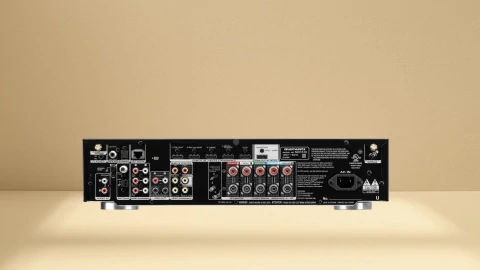
Winner: a tie
Audio Performance
During our hands-on testing, both the Denon AVR-S670H and Marantz NR1510 delivered solid 5.2-channel surround sound performance, but there were noticeable differences in power and dynamics. The Denon AVR-S670H, with its 75W per channel at 8 ohms, provided a more robust and dynamic sound, especially when driving larger speakers. Whether it was high-energy action sequences or orchestral soundtracks, the Denon maintained clarity and impact, even at higher volumes. We particularly noticed its advantage in low-frequency reproduction, with tighter bass response when paired with a capable subwoofer. The inclusion of Dolby Pro Logic II and DTS Neo:6 also allowed us to upmix stereo content into immersive surround sound, making even older recordings feel more engaging.
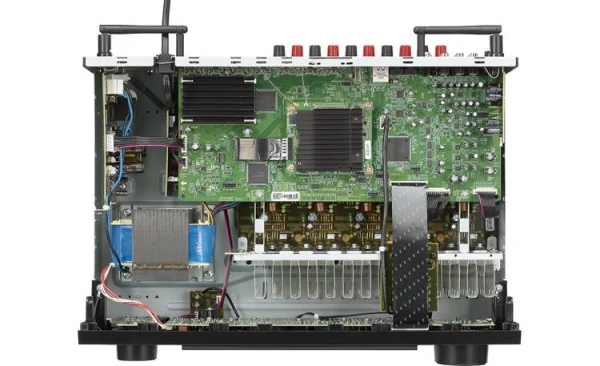
By comparison, the Marantz NR1510 delivered a more refined and warm sound signature, characteristic of the Marantz tuning. Its 50W per channel at 8 ohms was sufficient for our mid-sized testing room, but it lacked the sheer power and authority of the Denon when pushed to higher volumes. That said, dialogue reproduction in movies was impressively clear, and the receiver handled Dolby TrueHD and DTS-HD Master Audio formats well, preserving fine details in high-resolution audio tracks. Despite its lower power output, the NR1510 excelled in stereo music playback, with a more natural tonal balance, making it a strong contender for those who prioritize music as much as movies.
Get the Best Deal on Amazon Today!
Both receivers feature Audyssey MultEQ for room calibration, which effectively adjusted speaker levels and room acoustics. However, we found that the Denon AVR-S670H produced a slightly more spacious and dynamic sound, while the Marantz NR1510 offered a smoother, more relaxed listening experience. Depending on your preference—power and impact versus warmth and refinement—each receiver has its strengths.
Winner: Denon AVR-S670H
Video Performance
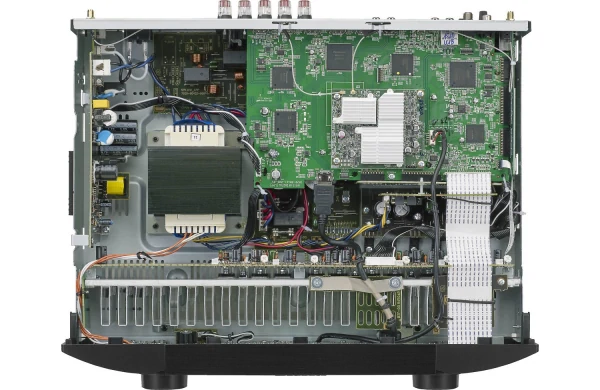
In our extensive video performance testing, the Denon AVR-S670H quickly established itself as the more future-proof option. With 8K/60Hz and 4K/120Hz pass-through support, it handled high-resolution content flawlessly on our test setup. Playing native 8K video on a compatible display revealed exceptional clarity and sharpness, with no noticeable artifacts or degradation. The 8K upscaling also proved effective, bringing older 1080p and 4K sources closer to ultra-high-definition standards. For gaming, the Variable Refresh Rate (VRR), Auto Low Latency Mode (ALLM), and Quick Frame Transport (QFT) features delivered smooth and lag-free gameplay, making the Denon a strong choice for next-gen console owners.
By comparison, the Marantz NR1510 is limited to 4K/60Hz pass-through, which, while still impressive, lacks the high frame rate support that gamers and 8K display owners may seek. That said, during our testing, it performed well with Dolby Vision, HDR10, and Hybrid Log Gamma (HLG) content. Colors appeared vibrant, and the dynamic range was well-preserved, ensuring excellent contrast in both dark and bright scenes. However, without support for HDR10+ or 8K video, the Marantz is better suited for those who primarily watch movies and TV in standard 4K HDR rather than those looking for cutting-edge video capabilities.
Both receivers support HDCP 2.3, ensuring compatibility with the latest streaming services and 4K Blu-ray players. However, for those looking to future-proof their home theater system or optimize gaming performance, the Denon AVR-S670H clearly outperforms the Marantz NR1510 with its higher refresh rates, 8K readiness, and gaming-focused HDMI features.
Winner: Denon AVR-S670H
OVERVIEWS:
Denon AVR-S670H
The Denon AVR-S670H is a modern 5.2-channel AV receiver designed for those seeking a balance between affordability and future-proof features. Delivering 75W per channel at 8 ohms, it provides ample power for medium-sized rooms while supporting an array of surround sound formats, including Dolby TrueHD and DTS-HD Master Audio. While it lacks Dolby Atmos and DTS:X, its Dolby Pro Logic II and DTS Neo:6 upmixing ensure an immersive audio experience, even with stereo sources.
One of its standout features is 8K video support, with three HDMI inputs handling 8K/60Hz and the remaining three supporting 4K/120Hz, making it ideal for both movie lovers and gamers. HDR10, HDR10+, Dolby Vision, and Dynamic HDR ensure high-quality visuals with enhanced contrast and color depth. Additionally, gamers will appreciate VRR (Variable Refresh Rate), ALLM (Auto Low Latency Mode), and QFT (Quick Frame Transport) for smooth, lag-free gaming.
In terms of connectivity, the AVR-S670H is well-equipped with six HDMI inputs, Wi-Fi, Bluetooth, and HEOS Built-in, allowing seamless streaming from Spotify, Amazon Music HD, and Apple AirPlay 2. Its bi-directional Bluetooth also allows audio transmission to wireless headphones. The Denon Setup Assistant and Audyssey MultEQ calibration simplify installation, ensuring optimal audio performance tailored to your space.
Pros
- More powerful 75W per channel output than the Marantz NR1510
- 8K/60Hz and 4K/120Hz pass-through for next-gen video compatibility
- Gaming features like VRR, ALLM, and QFT for smoother gameplay
- HEOS multi-room support and bi-directional Bluetooth for flexible audio streaming
- Easy setup with Denon Setup Assistant and Audyssey MultEQ
Cons
- No Dolby Atmos or DTS:X for true 3D audio immersion
- Slightly bulkier design compared to the Marantz NR1510
- Lacks multi-zone video output for sending different video signals to another room
Marantz NR1510
The Marantz NR1510 is a compact 5.2-channel AV receiver that caters to users seeking a sleek, space-saving design without compromising audio performance. With 50W per channel at 8 ohms, it’s best suited for smaller rooms or those who prioritize clarity and balance over sheer power. The renowned Marantz sound signature delivers a warm and musical experience, making it particularly appealing for stereo and vinyl enthusiasts.
While the NR1510 lacks 8K video support, it still handles 4K/60Hz pass-through with HDR10, Dolby Vision, and Hybrid Log Gamma (HLG), ensuring vibrant and dynamic visuals. Its six HDMI inputs with HDCP 2.3 provide plenty of connectivity for various devices, though it lacks gaming-focused features like VRR or QFT.
Wireless connectivity is a strong suit of the NR1510, featuring Wi-Fi, Bluetooth, Apple AirPlay 2, and HEOS Built-in, allowing seamless multi-room streaming. The integrated phono input also makes it a great choice for turntable owners. Additionally, Audyssey MultEQ calibration fine-tunes the audio output, ensuring optimal performance based on room acoustics.
Pros
- Slim, space-saving design that fits easily in tight spaces
- Clear, warm sound signature, great for music lovers
- Solid 4K/60Hz HDR10 and Dolby Vision support for home theater setups
- HEOS Built-in for wireless multi-room streaming
- Phono input for connecting a turntable
Cons
- Lower 50W per channel output, not ideal for large rooms or power-hungry speakers
- No 8K support or HDMI 2.1 gaming features
- Lacks advanced surround sound formats like Dolby Atmos and DTS:X
Final Thoughts
If you prioritize power, future-proofing, and gaming features, the Denon AVR-S670H is the better choice. (Get the Best Deal on Amazon Today!) However, if you value a compact design, warm sound, and a strong stereo music experience, the Marantz NR1510 remains a solid contender—especially for smaller setups and vinyl enthusiasts.
